States of Matter 6th Grade Science Worksheets
Are you a 6th grade science teacher looking for engaging and educational resources to help your students understand the different states of matter? Look no further! Our collection of 6th Grade Science Worksheets provides a comprehensive range of activities that focus on the entity and subject of states of matter. These worksheets are designed to enhance learning and promote critical thinking skills while keeping students actively involved in the material. With a variety of formats and topics, these worksheets are perfect for any classroom or homeschool setting.
Table of Images 👆
More Science Worksheets
6 Grade Science WorksheetsScience Heat Energy Worksheets with Answer
Science Worksheets Light and Sound
7th Grade Science Cells Worksheets
Worksheets Life Science Vocabulary
8th Grade Science Scientific Method Worksheet
Science Worksheets All Cells
What is the definition of matter?
Matter is anything that has mass and takes up space. It is composed of atoms and molecules, and exists in various states such as solid, liquid, and gas. Matter can undergo physical and chemical changes, and it is the substance that makes up all living and non-living things in the universe.
How many states of matter are there?
There are 5 states of matter: solid, liquid, gas, plasma, and Bose-Einstein condensate.
Describe the solid state of matter.
The solid state of matter is characterized by particles that are tightly packed together in a fixed, orderly arrangement. These particles vibrate in place, but do not have enough energy to overcome the forces holding them in position, resulting in a fixed shape and volume. Solids have a definite shape and volume, are relatively incompressible, and have high density compared to liquids and gases. Examples of solids include ice, wood, and metal.
Define the liquid state of matter.
The liquid state of matter is a phase of matter characterized by particles that are fluid and have enough energy to move past each other, yet still have strong enough attractive forces to maintain a definite volume. Liquids flow to take the shape of their container and have a fixed volume, making them distinguishable from gases and solids.
Explain the characteristics of the gas state of matter.
The gas state of matter is characterized by particles that are far apart, move freely and randomly, and have high kinetic energy. Gases do not have a definite shape or volume, and expand to fill the entire container they are in. They are compressible, meaning their volume can be reduced under pressure. Gases also have the ability to flow easily and have low density compared to liquids and solids. Additionally, gases can be highly reactive and exhibit properties such as color, odor, and electrical conductivity.
What is the plasma state of matter?
The plasma state of matter is a state in which a gas has been energized to the point that some of its electrons have escaped from their atoms, creating a mixture of positively charged ions and free electrons. Plasma is considered the fourth state of matter, distinct from solid, liquid, and gas states, and is typically found in stars, lightning, and fluorescent light bulbs.
Describe the process of melting.
Melting is the process by which a solid substance is heated, and its particles gain enough energy to break free from their rigid structure and move more freely, transitioning into a liquid state. As heat is applied, the solid's temperature increases, causing its particles to vibrate more vigorously until they reach a point where the forces holding them together are overcome, allowing the substance to transform into a liquid. This phase transition occurs at a specific temperature known as the melting point, where a substance changes from a solid to a liquid state.
What is vaporization and what are its two types?
Vaporization is the process of changing a substance from a solid or liquid state to a gas state. The two types of vaporization are evaporation, which occurs at the surface of a liquid, and boiling, which occurs throughout the entire volume of a liquid when it reaches its boiling point and forms bubbles of vapor.
Define condensation and provide an example.
Condensation is the process by which a gas or vapor turns into a liquid. This occurs when the temperature of the gas or vapor decreases to the point where its molecules slow down and come closer together, forming a liquid. An example of condensation is water vapor turning into liquid water on a cold glass of water.
Explain the process of sublimation.
Sublimation is the process in which a substance transitions directly from a solid to a gas without passing through a liquid phase. This occurs when the substance's vapor pressure is higher than its surrounding pressure at a certain temperature, causing it to sublime. During sublimation, the solid molecules gain enough energy to break free from their fixed positions and move into the gas phase, skipping the liquid phase entirely. This process is commonly observed in substances like dry ice (solid carbon dioxide) and mothballs (naphthalene).
Have something to share?
Who is Worksheeto?
At Worksheeto, we are committed to delivering an extensive and varied portfolio of superior quality worksheets, designed to address the educational demands of students, educators, and parents.

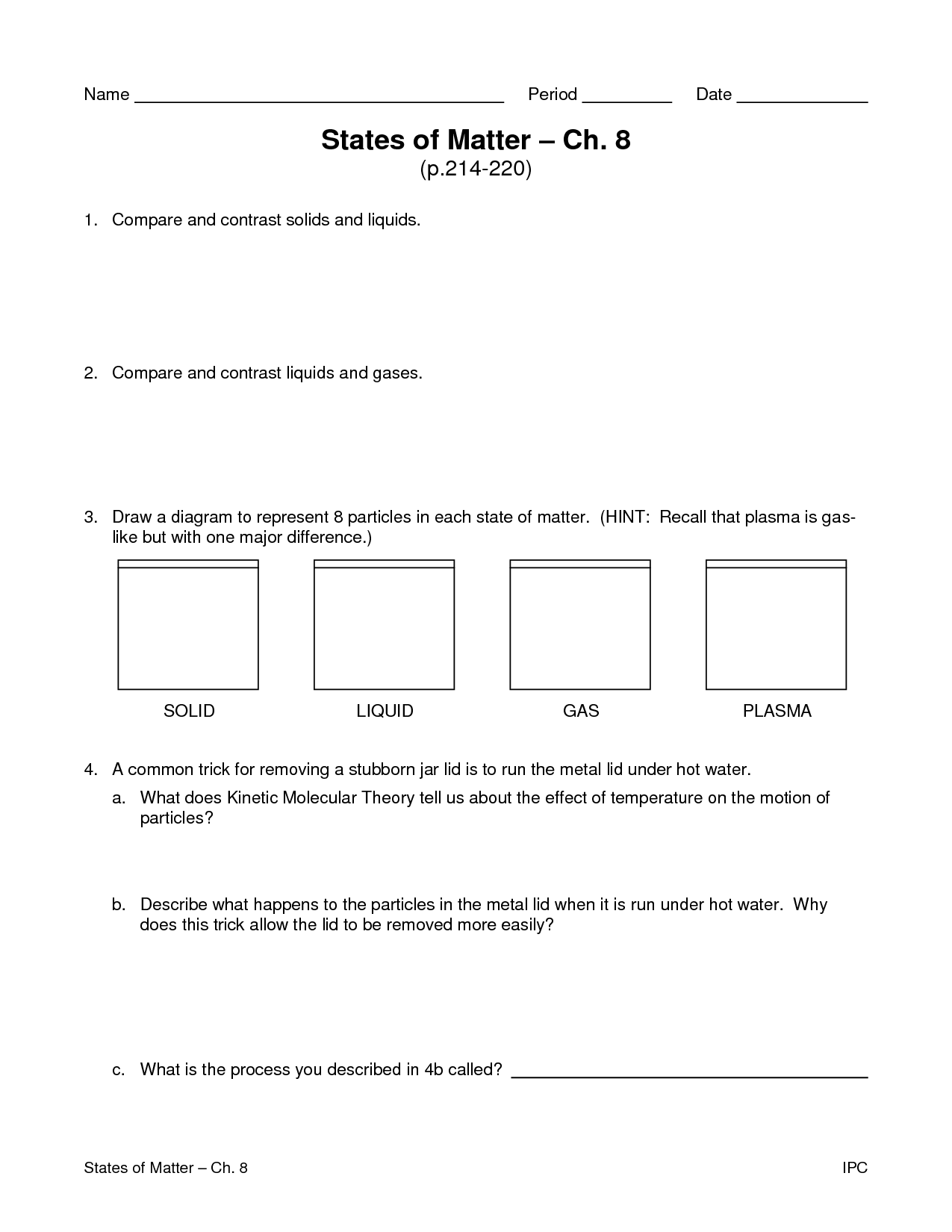



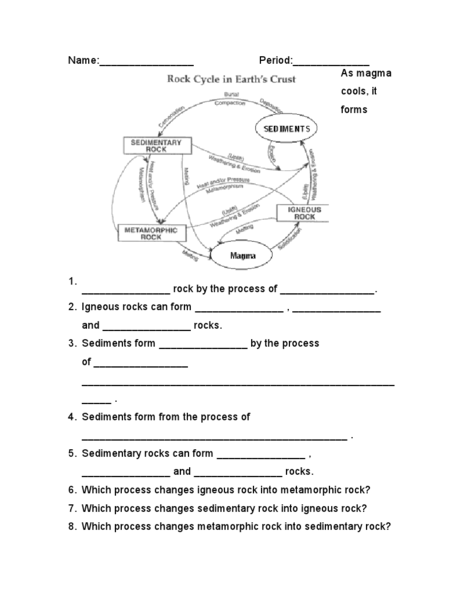

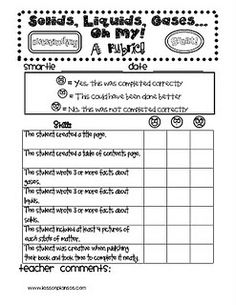

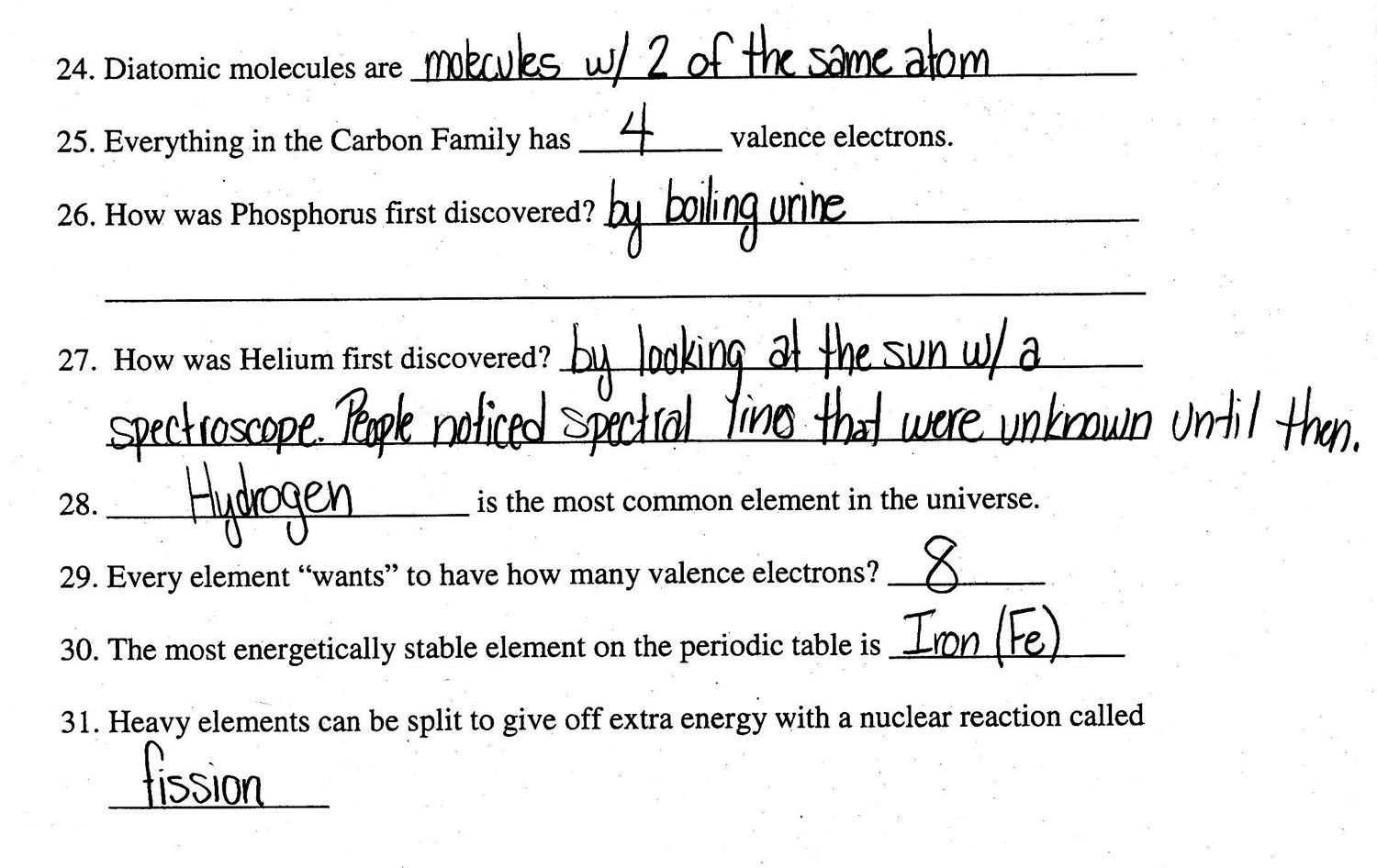
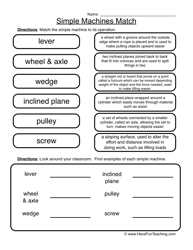




















Comments